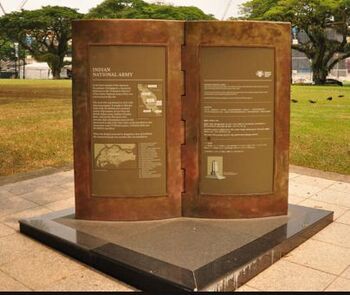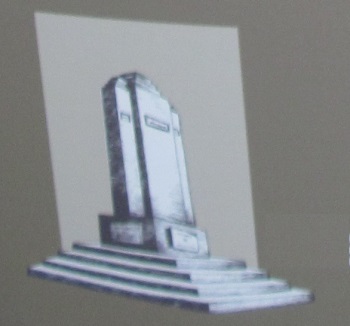Singapore
| Author: Dayanand Deswal |
Singapore or Singapur or Singapura, officially the Republic of Singapore, and often referred to as the Lion City or the Little Red Dot, is a sovereign city-state in Southeast Asia, and the world's only island city-state. It lies one degree (137 km) north of the equator, south of the southernmost tip of continental Asia and peninsular Malaysia, with Indonesia's Riau Islands to the south. Singapore's territory consists of a diamond-shaped main island along with 62 other islets. Since independence, extensive land reclamation has increased its total size by 23% (130 km2), and its greening policy has covered the densely populated island with tropical flora, parks and gardens.
The name Singapore was inherited from the indigenous Malay Singapura(City Of The Lion) and is derived from the Sanskrit Simhapura which was a town in the Indian epic the Mahabharata.Reference-(Encyclopedia of Global Religion, Volume 1, by Mark Juergensmeyer, Wade Clark Roof).
According to legends, there was a king named Upachar in the Chedi dynasty, who had five sons, who founded the cities of Hastinapur (Hastinapur), Aspur (in Anga), Simhapura(from where Lala Vijay went to Ceylon), Uttarpanchla (Ahichhatra) and Dadarpur (in the Himalayan region).Reference- (Brief Notes on the Chedi territory).
The English name of Singapore is an anglicisation of the native Malay name for the country, Singapura, which was in turn derived from Sanskrit (सिंहपुर - i.e the city of lion), hence, the customary reference to the nation as the Lion City, and its inclusion in many of the nation's symbols.
Singapore is a global commerce, finance and transport hub. Its standings include: the most "technology-ready" nation (WEF), top International-meetings city (UIA), city with "best investment potential" (BERI), second-most competitive country, third-largest foreign exchange market, third-largest financial centre, third-largest oil refining and trading centre, and the second-busiest container port. The country has also been identified as a tax haven.
INA War Memorial in Singapore

The (former) Indian National Army Monument is a historical site and a war memorial at the Esplanade Park located at Connaught Drive within the downtown of Singapore.
The INA memorial was re-built in 1995 by the National Heritage Board of the Singapore government to observe the 50th anniversary of the end of World War II. The Indian diaspora in Singapore had contributed to the construction of the monument with financial donations.
Original Monument

Netaji Subhash Chandra Bose had laid the foundation stone for the original memorial. This War Memorial Monument was demolished by Lord Louis Mountbatten after the British took control of the region. Subhas Chandra Bose had laid the foundation stone on July 8, 1945, a few months before Singapore was recaptured by the British. The monument was then erected within a month by the Japanese. The construction of the monument was proposed by Bose, the co-founder of the INA and Head of State of the Provisional Government of Free India. The INA was backed by the Japanese forces for its goal of gaining India’s independence from Britain.
Later in 1945 after the Japanese retreat from Singapore and the subsequent surrender of the remaining divisions of the Indian National Army to the advancing British, the British commander Lord Louis Mountbatten ordered the memorial to be destroyed. Mountbatten’s intention was to remove all traces of rebellion against British imperial authority. By attempting to completely erase all records of the INA’s existence, he sought to prevent the seeds of the idea of a revolutionary socialist independence force from spreading into the vestiges of British colonies, amidst the spectre of Cold War politics already taking shape at the time, which had haunted the colonial powers before the war.
The new World War II plaque was installed once again at the site of the Indian National Army memorial in 1995.
Netaji Bose had constituted a National Planning Committee under the aegis of the Congress in December 1938 and appointed Jawaharlal Nehru as its Chairman. As freedom dawned, in pursuance of the Haripura resolution, an Advisory Planning Board was set up by the Nehru-led interim Government in 1946.[1]
An article dated 24-11-2015 about INA Memorial
Prime Minister Narendra Modi's visit to the Indian National Army (INA) memorial in Singapore has not only created history, it has also opened old wounds.
The sombre visit makes Modi the first Indian head of government to pay tributes to the fallen INA soldiers, whose sacrifices were one of the primary reasons the British transferred power to Indian hands in 1947.
The interpretation of history fed to us over decades would have us believe that ahimsa alone got India freedom, and that Congress leaders' defence of the INA soldiers facing "war crimes" charges at the Red Fort was actuated by nationalistic motives. PR Dasmunshi, a minister in the first Manmohan Singh government, wrote in a newspaper article in January 2006 that "Pandit Nehru, notwithstanding his political differences with Netaji, saluted the historical march of the INA and came forward to defend it... as a lawyer in the Red Fort trials".
However, declassified British records make it amply clear that the Congress leadership's defence of the INA was politically motivated. For instance, on October 23, 1945, Brigadier TW Boyace of the military intelligence sent a secret report to the secretary of state for India in London. To understand the Congress gameplan, the military intelligence had used one of its moles. This mole, who rose to be a general in free India, mingled with the Congress leaders. The mole was told that before taking a stand on the INA, the Congress Working Committee had sent Asaf Ali out on a recce mission to gauge the public feeling. He travelled across India and discovered that people were overwhelmingly in support of the INA. "This inflammed feeling forced the Congress to take the line it did," the mole told his handler.
Ali further told the mole that the "Congress leaders had realised that those who joined the INA were far from innocent", and that was the reason Nehru always made it a point to refer to them as "misguided men" in his public speeches. Ali was positive that as and when the Congress came to power, it "would have no hesitation in removing all INA (men) from the Services".
And indeed, in free India, most of the INA men were kept out of armed forces. Many were put under surveillance by the intelligence bureau, which continued to play second fiddle to the MI5 for years and years after independence.
On the other hand, in his last known days, Subhash Chandra Bose took a decision, the like of which the leaders of free India could not, till very recently. He decided to raise a monument to the INA martyrs. In free India - a nation built on hollow Gandhian principles - such an initiative commemorating the men in uniform was unthinkable. Bose selected one out of half a dozen models submitted by his aide Colonel CJ Stracey. A few days before Bose was reported dead, he visited the site where the memorial was being raised under the most adverse circumstances.
After the end of the war, Supreme Allied Commander Southeast Asia Command, Louis Mountbatten, free India's choice as her first governor-general, did what was without a parallel. He ordered that the newly-built INA memorial should be blown up.
Some time later, the man who reaped the harvest of the Red Fort trials arrived in Singapore. Jawaharlal Nehru had been invited by local Indians to lay a wreath on the site of the demolished INA memorial. In the words of Mountbatten, this is what happened in March 1946: "When he came, I told him he could go where he liked and could do what he liked but asked him to refuse the invitation of local Indians to lay a wreath on the memorial to the Indian National Army."
Mountbatten said this in the course of his talk at the Cambridge University on Nehru's birth anniversary in 1968.
Two years later, he would write the following in the foreword to the memoirs of Nehru's sister Vijaya Lakshmi Pandit: "And I was able to persuade him not to lay the wreath on (memorial to the) pro-Japanese Indian National Army. In fact, the whole of his nine-day visit went extremely well, and this was the beginning of a deep friendship between Jawaharlal Nehru and Edwina and me."
Perhaps as a tribute to that lasting friendship, the government of India never supported any initiative to rebuild the INA memorial in Singapore. The present modest structure, which Modi visited, came up in 1995, thanks to Singapore's National Heritage Board.[2]
External Links
- http://www.newsanalysisindia.com/post/tag/indian-national-army
- http://www.dailyo.in/politics/subhas-bose-jawaharlal-nehru-ina-mahatma-gandhi-british-rule-congress/story/1/7567.html

